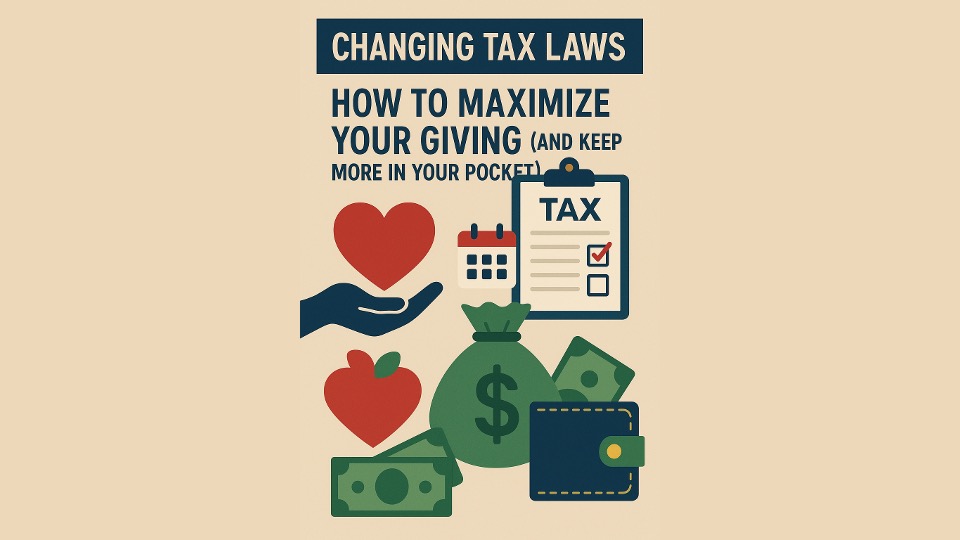Changing Tax Laws: How to Maximize Your Giving (and Keep More in Your Pocket)
Meet Lisa, a Minneapolis mom and community volunteer who loves supporting local causes. She uses the Spave app so that every time she shops, she rounds up her spare change and automatically contributes to her favorite nonprofit. But with changes to tax laws coming soon, Lisa started wondering:
Will my gifts still qualify for deductions? Is there a better way to give so I don’t lose tax benefits?
Lisa’s questions aren’t unique. Donors, nonprofit leaders, and even employers running matched-giving programs are asking the same thing. The good news? With a little planning — and the right tools — you can maximize your impact while still protecting your bottom line.
Why This Matters Now
Charitable giving is under pressure. Rising costs of living and shifting tax rules are making it harder for individuals and nonprofits to plan ahead. But this isn’t just a compliance issue — it’s a chance to be strategic and plan ahead.
Whether you’re an individual donor, a nonprofit seeking to boost year-end campaigns, or an employer looking to increase participation in your matching program, understanding what’s changing can help you unlock more impact, more participation, and more savings.
Key Search Intent: “get ahead of the game to maximize charitable tax benefits and changes to tax laws”
(Yes — this is what your peers are Googling right now!)
The Top 3 Changes You Need to Know
Takeaway Box: Three Things to Watch
1. Deduction Thresholds Are Moving: The amount you need to itemize before charitable gifts are deductible is shifting — which could affect whether you itemize at all.
2. Timing Matters More Than Ever: The date you give could determine what year you can deduct. Strategic planning can boost your impact.
3. Employer + Nonprofit Planning Is Key: Matched-giving campaigns and fundraising drives should align with these new thresholds to maximize donor participation.
For a full breakdown of the changes, read the complete article from our tax advisors at CLA.
How to Prepare: Practical Tips for Every Audience
For Individual Donors:
Consistency matters. Use Spave’s roundup or percentage giving features to stay on track — then take advantage of our soon-to-launch MyDAF feature to create your own micro-donor advised fund. This will let you set aside funds now and distribute them strategically for maximum tax benefit – currently within the calendar year.
For Nonprofits:
Communicate early and often with donors about the importance of timing gifts this year. Make giving frictionless by promoting Spave as a mobile-first, anytime-anywhere option — so supporters never miss the optimal deduction window.
For Employers:
Look at your calendar. Consider timing matched-giving campaigns or employee engagement initiatives around periods that provide the greatest tax advantage. The easier you make it for employees to participate, the more likely they are to do so.
Industry Insight from CLA
“Charitable giving is changing–which impacts donors and charities alike. By understanding the new rules now–before they go into effect in 2026–donors can work to shape gifts and giving strategies that are both financially advantageous and have the greatest impact to the organizations they support.” – Kelsey Vatsaas, Managing Principal, Nonprofit Industry – CLA
To learn more about the impact to you, your business, and the nonprofits you support, go to: CLAconnect.com
To discover how Spave can help you get ahead of these changing tax laws, email Support@spave.io.
Together, we’ll amplify and accelerate impact — while helping you save, share, and protect your hard-earned dollars.
Related Resources
FAQ
Q: What are the main changes to charitable deductions in 2025?
A: Thresholds for itemization and timing of deductions are shifting, so donors may need to adjust how and when they give to maximize benefits.
Q: How can individuals maximize charitable tax benefits?
A: Plan gifts strategically, consider “bunching” contributions, and use tools like Spave and donor-advised funds to optimize timing.

